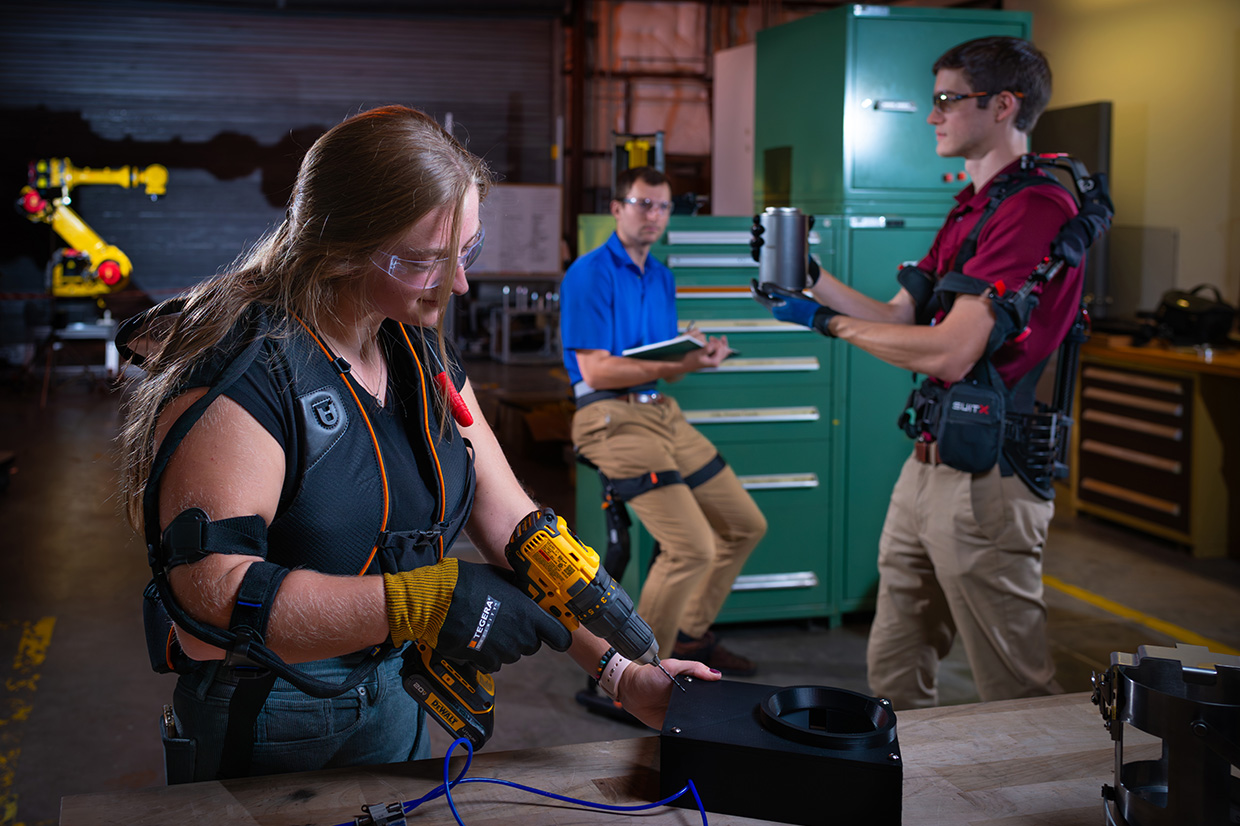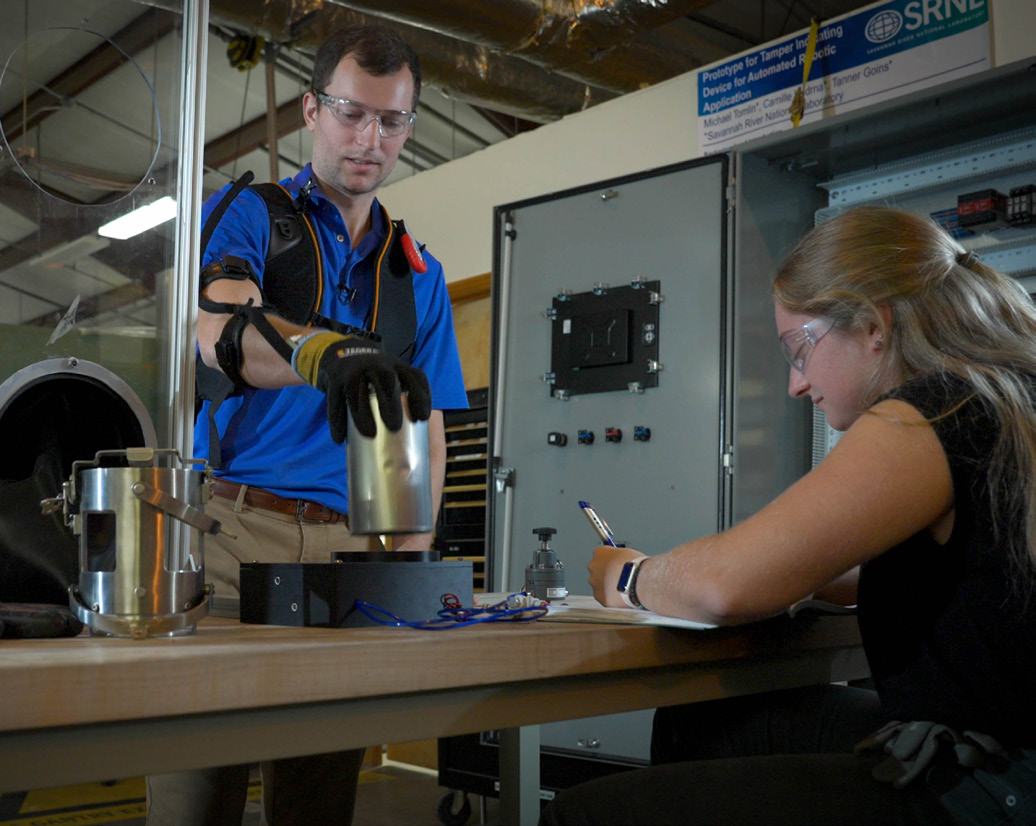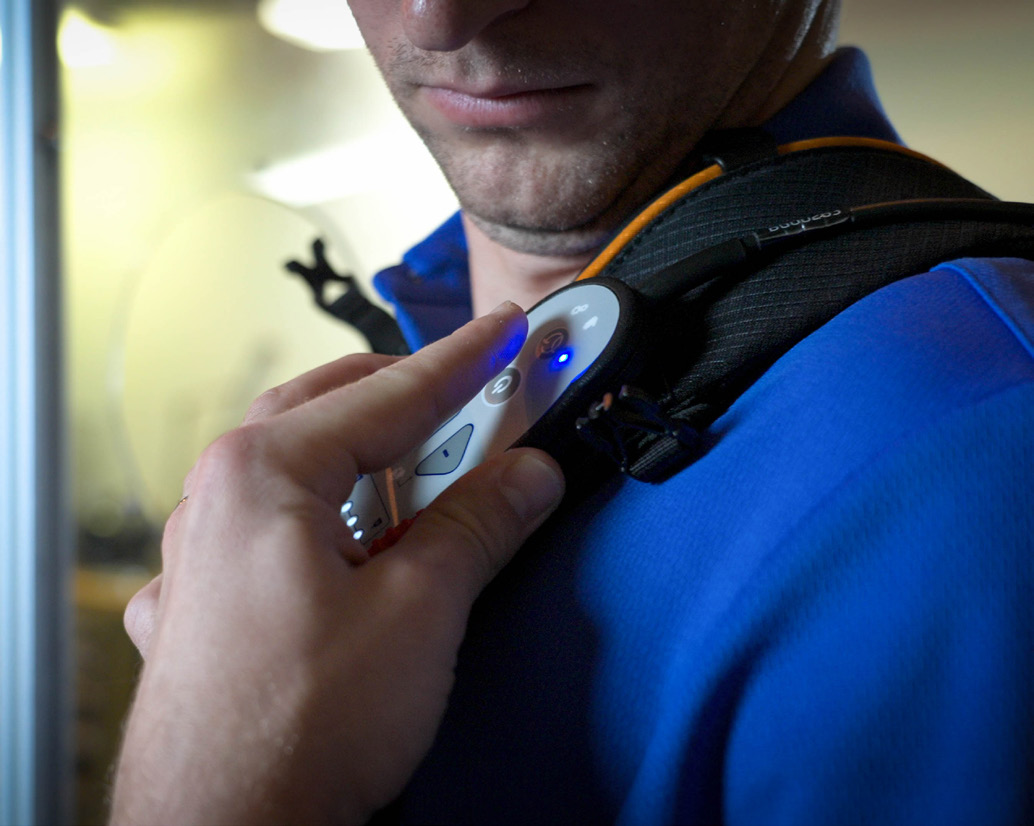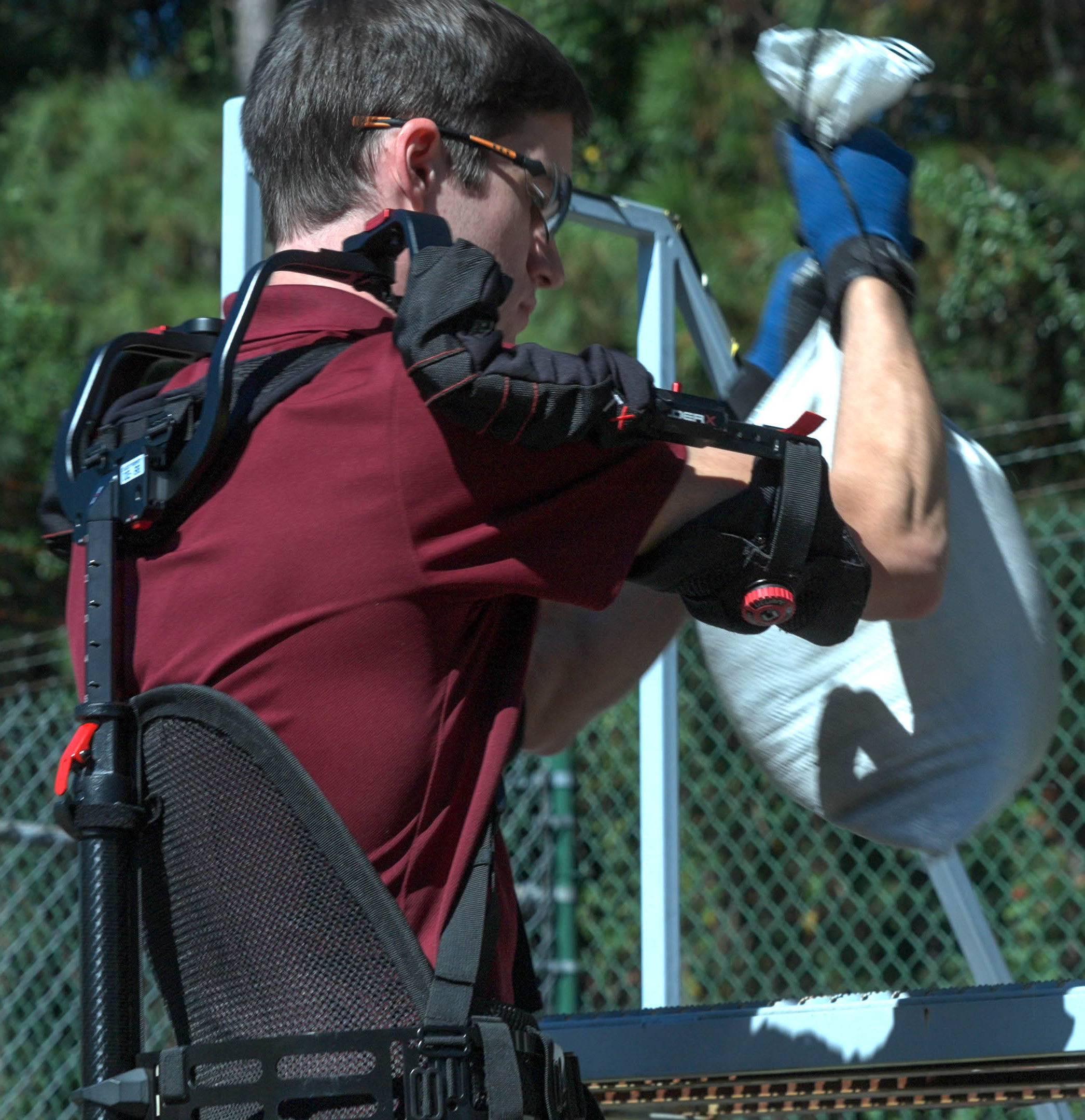Wearable Robotics Team Finds Innovative Ways to Prevent Injuries
“There are devices for basically every joint, every muscle you can use, to help in some way or another.” – Nick Spivey

SRNL wearable robotics team members Cami Kudrna (left) Nick Spivey (center) and Tanner Goins (right) evaluate robotic devices in routine tasks. Photo by Justin Crawford, SRNS.
The nation’s nuclear weapons program helped win the Cold War and continues to provide a deterrent vital to national security, but it also left a significant environmental legacy. While environmental cleanup has been completed at most Department of Energy (DOE) sites associated with the nuclear defense program, 15 sites still have decades of waste processing, storage, remediation and decommissioning work ahead of them.
Automation and teleoperation have sped up legacy cleanup and increased worker safety, but the complex nature of many tasks still necessitates manual, physically challenging work. Personal protective equipment (PPE) can be ungainly, jobs can be both highly diverse and repetitive, and strain can be placed on the musculoskeletal system. Fatigue is also common while performing these tasks. These conditions greatly increase the risk of injury.
DOE’s Office of Environmental Management (EM) recognized this issue, and sponsored Sandia National Laboratories (“Sandia”) as the testbed to develop wearable robotics technologies to increase worker safety at EM sites. In turn, Sandia assembled a team of partners for the project from academia, industry and other national laboratories including Savannah River National Laboratory (SRNL).
Jason Wheeler, EM wearable robotics program lead at Sandia, said the team was built as an “organic collaboration,” as interdisciplinary partners came into focus by having unique expertise and experience. “SRNL has deep institutional knowledge of DOE and DOE-EM,” Wheeler said. “They know how to deploy devices compatible with [DOE] PPE, security, and safety culture.”
In late 2021 Sandia reached out to the Instrumentation, Robotics, and Imaging Systems group in SRNL’s Advanced Engineering department. Knowing the tremendous potential for wearable robotics across the EM landscape, the SRNL team jumped at the chance to participate. The group consists of Rick Minichan, Tanner Goins, Cami Kudrna, and Nick Spivey, with Spivey serving as lead.

Nick Spivey demonstrates the Iron Hand device. Photo by Justin Crawford, SRNS.
The team’s expansive facility boasts large robotic machines worthy of an automotive production line, but the wearable devices are personal and sleek, even referred to as “exoskeletons.” This term conjures up images of full-body superhero suits like Iron Man’s, but the team emphasizes that the devices are for strain, injury and fatigue prevention, not performance enhancement. “These devices don’t help you lift more – that’s a slippery slope – someone will get hurt trying to do too much,” said Spivey. “But what it does do is prevent overuse and strain injuries, so if you are lifting heavy things from the ground, these [devices] help reduce the chances of that happening by offloading the weight to somewhere else on your body that’s less likely to be injured.”
Some of the devices are truly robotic, containing active sensors and motors, but many of them are passive. They contain a band or a spring that stores and releases energy to make tasks less physically demanding. Some of the devices have rigid structures, while others are constructed of only soft materials. The group has custom fabrication capability, but 80-90% of the devices are existing, commercial technologies. It’s the team’s charge to identify potential applications for EM. SRNL supports a myriad of different activities across the Savannah River Site (SRS) and the DOE complex, greatly increasing the chances of a match between task and device.

Iron Hand grip strength adjustment control. Photo by Justin Crawford, SRNS.
One of these applications is shielded cell work, a labor-intensive task in heavy use at SRS. Shielded cell workers must be on their feet for long periods of time, which causes stress and fatigue on the lower extremities. The Noonee “Chairless Chair” device attaches discreetly to the thigh and shoe, with articulated pieces running up the back of the legs. A worker can stand and walk while wearing the device but when transitioning to the sitting position, the device instantly reconfigures into a chair, taking the standing weight off the legs.
Another common task at SRS is lifting 45 lb. lead shielding blankets at H Tank Farm. Individual workers must lift and reposition these blankets onto process pipelines up to 50 times per day. The HeroWear “Apex” device offloads weight from the lower back to the thighs, greatly reducing the chances of back injury. Moreover, glovebox tasks are common across SRS. The Bioservo “Iron Hand,” a true robotic device, actively enhances each finger’s grip strength, reducing strain on the hands.
The SRNL wearable robotics team hopes to identify more applications at SRS, but also markets the technology to other EM sites. Recently the team traveled to Oak Ridge National Laboratory to demonstrate some of the devices. SRNL is geographically positioned to be the project liaison to other EM sites in the eastern U.S. “There’s such a wide range of use cases for these devices,” said Spivey. “There are devices for basically every joint, every muscle you can use, to help in some way or another.”
In doing so, the team reflects SRNL’s ability to partner across the DOE complex and beyond, as well as support projects headquartered at other locations, including wearable robotics at Sandia.
The team might not be developing technology for superheroes, but in reducing the chance of injury and allowing workers greater peace of mind while on the job, they are everyday heroes in their own right.

The shoulderX device reduces shoulder strain and fatigue associated with overhead lifting. Photo by Justin Crawford, SRNS.